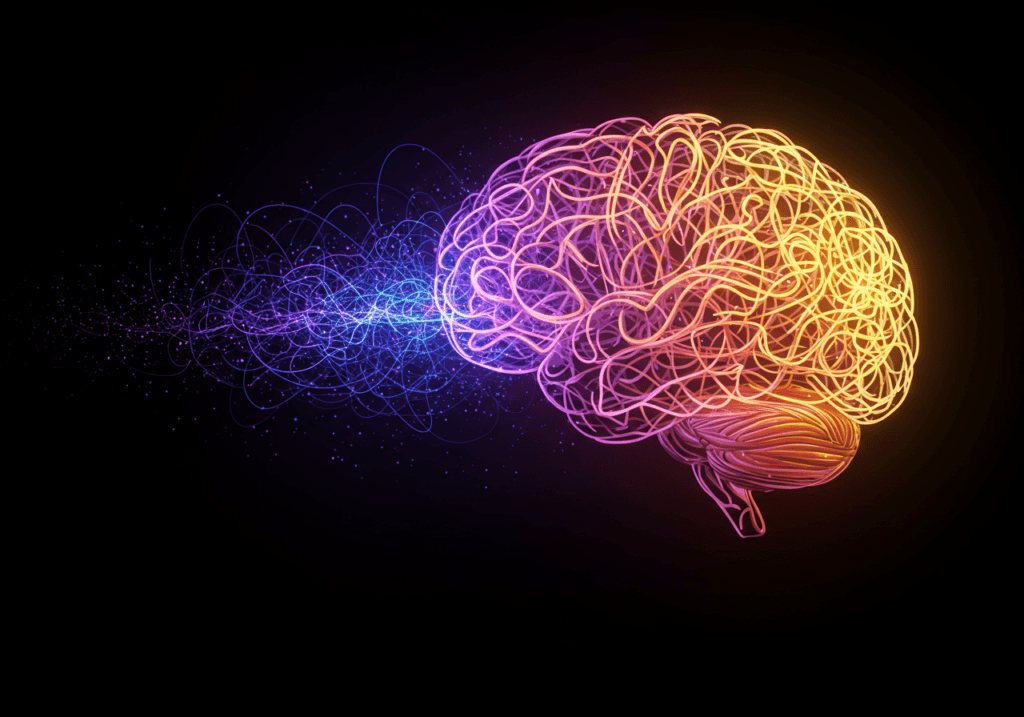Table of Contents
Unlocking the secrets of your subconscious mind can lead to profound personal transformation.
Our subconscious holds deep-seated beliefs that often dictate our thoughts, emotions, and behaviors without us even realizing it. By addressing and changing these limiting beliefs, you can alter your mindset and pave the way for a more fulfilling life.

Transforming the subconscious is about aligning your internal beliefs with the goals you wish to achieve.
When negative beliefs are acknowledged, they can be reshaped to support a positive outlook and encourage personal growth. This process is empowering and allows you to direct your life more consciously.
Engaging with techniques for subconscious reprogramming can make lasting changes in your daily experience.
These strategies offer tools to consciously rewrite the mental scripts that have been holding you back, opening up possibilities for success and well-being.
Key Takeaways
- Subconscious influences daily life by shaping beliefs.
- Techniques can alter limiting beliefs into positive ones.
- Real change requires conscious effort and strategic tools.
Understanding the Subconscious Mind

Your subconscious mind is a powerful force that influences your beliefs, emotions, and behaviors without you being fully aware.
Differentiating between the conscious and subconscious is crucial for effective subconscious reprogramming.
Conscious vs. Subconscious
The conscious mind is your active awareness; it’s where you process immediate thoughts and make decisions. This part of your mind is logical and analytical, dealing with day-to-day engagement with your environment.
In contrast, the subconscious mind operates silently beneath the surface. It manages long-term memories, instincts, and learned behaviors that guide your automatic responses.
When you drive a car without consciously thinking about the mechanics or understand a language fluently, your subconscious is at work.
To influence your behavior, reprogramming this area involves altering ingrained beliefs and emotional patterns that exist within your subconscious programming. Recognizing these distinctions allows you to direct efforts toward changing deep-rooted assumptions and automatic reactions.
The Role of the Unconscious Mind
The unconscious mind is a more elusive aspect, often interchanged with the subconscious. While closely linked, the unconscious houses more primal desires and repressed memories which generally lie out of direct reach. It acts as a repository for feelings and urges shaped from early development stages.
These elements, despite being hidden, can manifest through behavior and dreams, reflective of your deeper psyche.
By focusing on techniques like meditation or cognitive restructuring, you can begin to access and influence the content of your unconscious mind. This process not only aids in personal growth but also assists in achieving greater conscious awareness and self-understanding.
Identifying Limiting Beliefs

To change what holds you back, it’s crucial to first identify these restraining thoughts. Core beliefs and negative thought patterns often shape your worldview and self-perception, hindering growth and potential.
Sources of Limiting Beliefs
Limiting beliefs frequently stem from early life experiences and the messages received from family, school, and society. These influences can embed core beliefs that remain with you into adulthood.
Perceptions of failure, rejection, or criticism can also give rise to beliefs that undermine self-confidence and result in self-doubt.
Cultural and social norms relay implicit rules about what you can or cannot achieve. This external input reinforces internal narratives that restrict your capabilities. Recognizing these sources illuminates pathways for change by contrasting limiting beliefs with empowering alternatives.
The Impact on Personal Growth
Limiting beliefs profoundly impact your personal growth by shaping the lens through which you view opportunities and challenges. They often manifest as negative thought patterns that predict failure or set arbitrary limits on what you can achieve.
This self-sabotage narrows your potential paths and restricts the effort invested into pursuits.
Self-doubt can become pervasive, inhibiting initiative and resilience. Over time, this limitation delays or stalls progression toward personal and professional goals. By confronting these beliefs, you enable a shift toward more constructive thought patterns, fostering a mindset open to new possibilities and growth opportunities.
Techniques for Subconscious Reprogramming

Subconscious Reprogramming involves various techniques that target limiting beliefs and enhance mental well-being. These methods help create positive change by altering thought patterns and increasing self-awareness.
Affirmations and Positive Self-Talk
Affirmations are statements that you repeat regularly to foster positive thinking and eliminate negativity. By saying phrases like “I am worthy” or “I embrace opportunities,” you can shift negative beliefs to empowering ones.
To maximize their effect, practice affirmations daily. Write them down, speak them aloud, or even record them to listen to later. Consistency reinforces these positive thoughts, rewiring your subconscious to support your goals.
Visualization Exercises
Visualization is a technique where you mentally picture a desired outcome. This activates neural pathways in the brain, simulating the experience of achieving your objectives.
For instance, if you’re aiming for confidence in public speaking, visualize yourself giving a successful speech.
To practice, find a quiet space and close your eyes. Imagine every detail of achieving your goal. This enhances motivation and prepares your mind for real-life success.
Meditation and Mindfulness Practices
Meditation and mindfulness develop awareness of your present thoughts and feelings, facilitating subconscious change.
Regular practice can help you identify and release limiting beliefs. Techniques such as focusing on your breath or guided imagery can be effective.
Set aside a few minutes daily. Start by observing your thoughts without judgment. Gradually increase your session length as you become more comfortable. This mindfulness improves emotional balance and reduces stress.
Hypnotherapy and Self-Hypnosis
Hypnotherapy uses relaxation and focus to access the subconscious mind, allowing for positive suggestion and change.
A trained hypnotherapist guides you into a trance-like state, facilitating deep subconscious reprogramming.
Self-hypnosis, on the other hand, is a solo practice. Begin by finding a comfortable position and focusing on your breath. As you relax, repeat positive affirmations or suggestions related to your goals.
Both methods can effectively dissolve limiting beliefs and create lasting mental shifts.
The Science of Change
When it comes to altering your limiting beliefs, understanding the underlying science is crucial.
Central to this process is neuroplasticity, which is the brain’s remarkable ability to reorganize itself by forming new neural pathways. Consistent repetition is also vital, as it strengthens these pathways, making new patterns of thought more natural and automatic.
Neuroplasticity and Neural Pathways
Neuroplasticity is your brain’s capacity to adapt and change through new experiences. Unlike older theories that suggested the brain is static, modern science shows that your brain is highly adaptable.
This adaptability allows for the creation and strengthening of neural pathways, which are connections that facilitate communication between different brain regions.
These pathways can be reshaped by subconscious reprogramming practices. Programs like PSYCH-K® work by creating harmony between the brain’s hemispheres, fostering an environment where new, positive beliefs can take root.
The activation of whole-brain integration enables these new beliefs to feel natural, enhancing your ability to replace limiting beliefs effectively.
Efficacy of Repetition and Consistency
Repetition and consistency are key to embedding new beliefs into your subconscious mind. By continually reinforcing new ideas, you encourage your brain to strengthen emerging neural pathways.
This reinforcement makes your new, desired beliefs more dominant over time.
Daily practices such as affirmations or self-hypnosis can help maintain consistency. Repetition ensures that your cognitive resources focus on these new pathways, making them more resilient.
Over time, these consistent practices create lasting change by subconscious reprogramming, effectively transforming your mindset and behaviors.
Setting the Foundation for Transformation

To successfully reprogram your subconscious and change limiting beliefs, it’s essential to establish a strong base. This involves cultivating a positive mindset and setting clear goals with visualization techniques.
Developing a Positive Mindset
Adopting a positive mindset is crucial for transformation. Positive thinking shifts your focus from limitations to possibilities, helping to identify opportunities for change.
Engage in activities that promote positivity, such as gratitude journaling and affirmations.
Regularly practice self-appreciation to reinforce positive beliefs. As you cultivate positivity, you create an environment that supports your desired outcome. Taking small steps consistently leads to lasting change, enhancing your ability to reprogram subconscious patterns.
The Importance of Clear Goals and Visualization
Setting clear goals provides clarity in your transformation journey. When goals are well-defined, they act as a roadmap for achieving your desired outcomes.
Visualization exercises are vital; they help you imagine and experience your goals vividly.
Engage in consistent visualization practices to mentally rehearse success. This not only reinforces belief in your goals but also aligns your subconscious with your conscious desires. Pairing visualization with clear, actionable steps increases the likelihood of transformation success.
Strategic Application in Everyday Life
Subconscious reprogramming can transform interpersonal relationships, improve decision-making, and establish positive habits. Applying these strategies can lead to profound changes in your daily experiences.
Communication and Relationships
In relationships, subconscious beliefs can significantly influence how you communicate. Awareness of these beliefs allows you to address any negative perceptions or assumptions that might affect interactions.
By subconscious reprogramming your mind to adopt more positive, constructive beliefs, you can enhance empathy and understanding.
This change promotes healthier communication patterns, fostering deeper connections with others. Practicing mindfulness and active listening can make interactions more authentic and meaningful, ultimately leading to more fulfilling relationships.
Decision-Making and Commitment
When it comes to decision-making, subconscious influences often steer your choices.
Identifying these factors can help you clarify your priorities and align your actions with your core values.
Subconscious Reprogramming these underlying beliefs enables you to reduce doubt and hesitation, making it easier to commit to decisions confidently.
Techniques like visualization and positive affirmation can solidify your decision-making foundation, allowing for improved personal and professional outcomes.
Lifestyle and Habit Formation
Your subconscious beliefs are crucial in shaping habits and daily routines.
To change habits, consistency in subconscious reprogramming is essential.
Setting clear intentions and visualizing the desired lifestyle changes can reinforce new habits over time.
Tools like habit trackers and positive reinforcement support this transformation, leading to sustainable health and wellness improvements.
Recognizing and revising any limiting beliefs about your capabilities can empower you to adopt and maintain beneficial lifestyle changes effortlessly.
Advancing Further: Techniques and Tools
In refining your journey of subconscious reprogramming, various tools and techniques emerge as powerful aids. These methods harness the mind’s potential to reshape beliefs effectively.
Guided Meditation and Binaural Beats
Guided meditation is an engaging practice that helps you enter a state of deep relaxation and focus. By directing your mind through visualizations and verbal instructions, it enhances your ability to replace limiting beliefs with empowering alternatives.
Incorporating binaural beats—audio frequencies that can influence your brainwave patterns—further deepens this effect.
Listening to these beats during meditation can promote a mental state that supports positive change and relaxation. Together, these practices offer a holistic approach to subconscious transformation, facilitating mental clarity and emotional balance.
Neuro-Linguistic Programming (NLP)
Neuro-Linguistic Programming is a technique that explores the connection between neurological processes, language, and behavioral patterns. It provides structured methods to change thought patterns and beliefs through specific exercises.
NLP focuses on understanding how language influences your brain and behavior, offering techniques such as reframing, anchoring, or visualization.
These methods help alter your internal dialogue to support new, positive beliefs. By consciously modifying these patterns, you can redirect your subconscious to foster a more constructive mindset, empowering you to overcome limiting beliefs and achieve personal growth.
Use of Vision Boards and Journaling
Creating vision boards involves collecting representations of your goals and aspirations through images and words. This visual tool helps keep your subconscious focused on what you wish to achieve, serving as a constant reminder of your desired outcomes.
Journaling complements this by providing a reflective space to explore and solidify these aspirations.
Through writing, you can identify and deconstruct limiting beliefs, while reinforcing new, empowering ones.
Combining these tools fosters clarity and commitment to your personal goals, encouraging continuous subconscious alignment with your conscious objectives. This process assists in crafting a tangible roadmap to personal development and success.
Measuring Progress and Maintaining Change
To ensure lasting change through subconscious reprogramming, it is crucial to effectively measure progress and maintain the positive shifts.
By focusing on personal growth, joy, and fulfillment, you can create a sustainable transformation in your life.
Tracking Personal Growth
Tracking your personal growth provides clear evidence of change and motivates you to continue evolving.
Begin by setting specific, measurable goals related to subconscious reprogramming. These might include changes in thought patterns, increased self-confidence, or improved decision-making.
Regularly review your goals and reflect on your progress. Journaling is a useful tool; it captures your thoughts and achievements, offering a tangible record of your journey.
Consider creating a simple table or checklist to track specific milestones, helping you visualize your development over time.
Engage in self-assessment by asking yourself questions about changes in behaviors, emotional responses, and attitudes. This helps identify areas where you have grown and aspects that may need further attention.
Being honest with yourself reinforces accountability, ensuring continuous progress.
Fostering Joy and Fulfillment
Maintaining change requires fostering joy and fulfillment in your daily life.
Cultivate gratitude by acknowledging the positive aspects of your journey and the progress you have made. This practice helps reinforce the changes you’ve implemented and keeps your mindset positive.
Engage in activities that bring you joy and align with your goals. These activities serve as regular reminders of your achievements, enhancing your overall sense of fulfillment.
Experiment with new hobbies or revisit old passions to maintain enthusiasm and prevent stagnation.
Building a support network of friends, mentors, or like-minded individuals encourages sustained growth. They provide encouragement, share experiences, and offer valuable insights that can enrich your journey.
Regularly interacting with such a community can reinforce your commitment to personal development and lasting change.
Frequently Asked Questions
Subconscious Reprogramming your mind to overcome limiting beliefs involves specific strategies and time commitments. Different techniques can be employed, including while you sleep, to facilitate change. As you work through these practices, you’ll find changes in your mental health and manifesting abilities.
How can one effectively reprogram their subconscious mind to overcome limiting beliefs?
To effectively reprogram your subconscious mind, incorporate techniques like affirmations, visualization, and meditation. These methods help in replacing negative beliefs with positive ones.
Engaging in consistent practice and maintaining a positive mindset play crucial roles in making significant changes.
What techniques are recommended for subconscious reprogramming mind while sleeping?
Subconscious Reprogramming during sleep can be enhanced through audio affirmations or guided meditations played overnight. These soundtracks, designed to influence your subconscious, harness the brain’s receptive state during sleep to instill new, positive beliefs.
How long does it typically take to notice changes after beginning subconscious reprogramming?
The timeline for noticing changes can vary based on individual commitment and the specific beliefs being targeted.
While some changes might be evident in a few weeks, others may take several months. Consistency and patience are key to experiencing noticeable improvements in your belief system.
What are some benefits one might experience after subconscious reprogramming their mind?
Subconscious Reprogramming your mind can lead to increased self-confidence, improved mental health, and a more positive outlook on life. Other potential benefits include enhanced problem-solving abilities and the capacity to attract and manifest desired outcomes in various areas of your life.
Are there methods to reprogram the subconscious mind that can be practiced daily?
Daily practices such as journaling, mindfulness meditation, and repeating positive affirmations can aid in subconscious reprogramming your mind.
These methods encourage the persistent reinforcement of new, empowering beliefs, gradually replacing limiting ones.
How does releasing limiting beliefs impact one’s overall mental health and manifestations?
Releasing limiting beliefs can lead to improved mental well-being, reducing anxiety and stress. As limiting beliefs are replaced, it’s common to experience more successful manifestations of your goals and aspirations. This can foster a sense of fulfillment and positivity in everyday life.
Want to deep dive into the subconscious reprogramming?
The best readings for you to improve your technics of subconscious reprogramming, overcoming limiting beliefs:
- “Mindset: The New Psychology of Success” by Carol S. Dweck: While not solely focused on subconscious reprogramming, Dweck’s work on growth vs. fixed mindsets is fundamental to understanding how beliefs shape our reality. A growth mindset is essential for successfully changing limiting beliefs.
- “Thinking, Fast and Slow” by Daniel Kahneman: This book explores the two systems of thinking – the fast, intuitive System 1 and the slower, more deliberate System 2. Understanding how these systems interact is crucial for recognizing how subconscious biases and beliefs influence our decisions.
- “The Power of Your Subconscious Mind” by Joseph Murphy: A classic in the self-help genre, this book delves into the potential of the subconscious mind and offers techniques for harnessing its power. While some of the concepts might be considered “new age,” it provides a good starting point for exploring the topic.
- “Unleash the Power Within” by Tony Robbins: Robbins’ work integrates NLP, psychology, and personal development strategies. While his approach is energetic and motivational, he covers techniques like reframing beliefs and visualization, which are relevant to subconscious reprogramming.
- “Feeling Good: The New Mood Therapy” by David D. Burns: This book focuses on Cognitive Behavioral Therapy (CBT) techniques, which are highly relevant to identifying and challenging negative thought patterns and limiting beliefs. Cognitive restructuring is a core element of subconscious reprogramming.




12 thoughts on “Subconscious Reprogramming: Overcoming Limiting Beliefs for Empowerment”